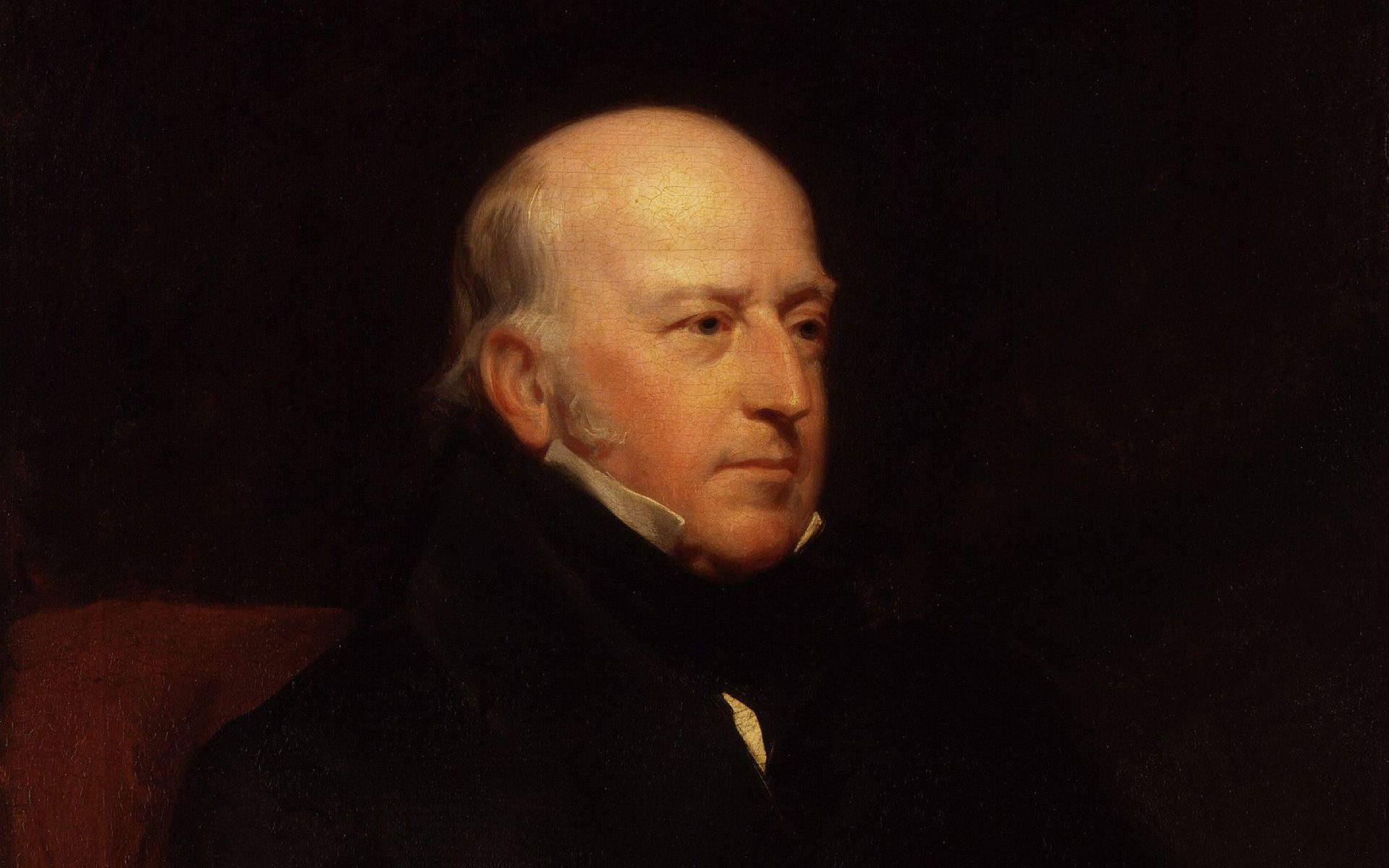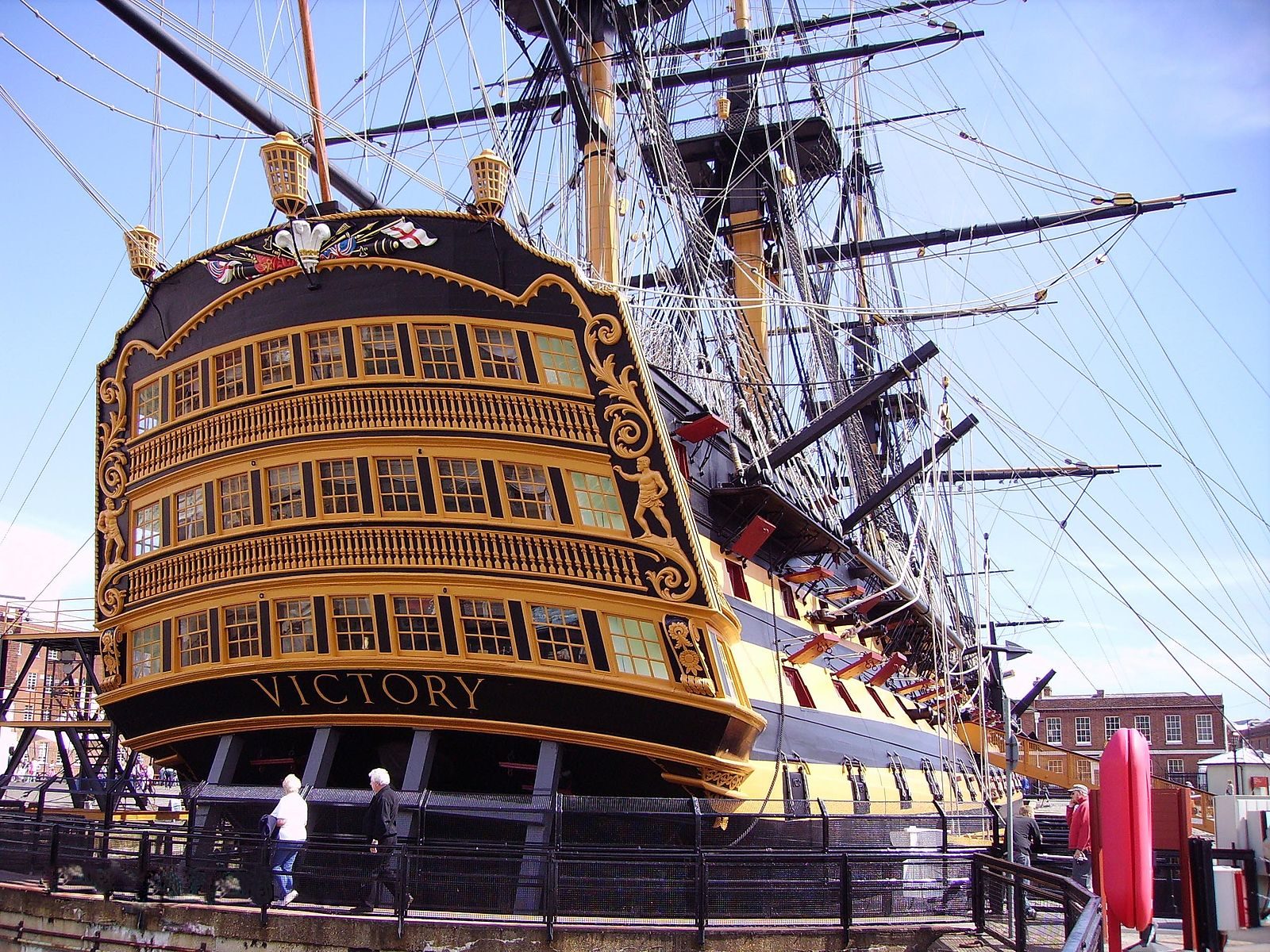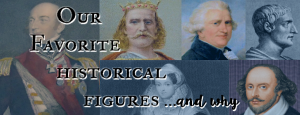 When I decided to write a post on Sir Edward Codrington for the latest Historical Writers Forum blog hop, I can honestly say that I hadn’t really taken on board, that the title of the blog hop was going to be “My favourite historical character” or I might have chosen somebody else. Codrington is by no means my favourite. Anybody who has read my books will know that the Duke of Wellington tops my list, with honourable mentions for General Robert Craufurd and General Charles Alten. However, I’ve already written blog posts on all of these, and I wanted to do somebody different.
When I decided to write a post on Sir Edward Codrington for the latest Historical Writers Forum blog hop, I can honestly say that I hadn’t really taken on board, that the title of the blog hop was going to be “My favourite historical character” or I might have chosen somebody else. Codrington is by no means my favourite. Anybody who has read my books will know that the Duke of Wellington tops my list, with honourable mentions for General Robert Craufurd and General Charles Alten. However, I’ve already written blog posts on all of these, and I wanted to do somebody different.
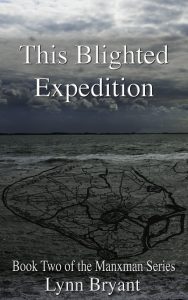 I introduced Codrington and his wife in This Blighted Expedition, and he is going to be an important character in the next book in the Manxman series, This Bloody Shore, which will be out during the second half of next year. And having spent some time reading his published memoirs, as well as looking into his career, I admit, that while Codrington isn’t my favourite, I do like him. So what’s the problem?
I introduced Codrington and his wife in This Blighted Expedition, and he is going to be an important character in the next book in the Manxman series, This Bloody Shore, which will be out during the second half of next year. And having spent some time reading his published memoirs, as well as looking into his career, I admit, that while Codrington isn’t my favourite, I do like him. So what’s the problem?
The problem, dear reader, is that Edward Codrington was a slave owner. But we’ll come back to that later.
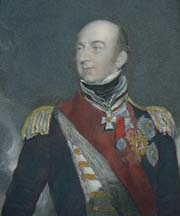 Edward Codrington was born in 1770, a youngest son in an aristocratic family. His mother died the same year, possibly giving birth to him, and his father died when he was five, leaving him to the care of an uncle by the name of Bethell. He was educated at Harrow for a short time and entered the Royal Navy in 1783 at the age of thirteen.
Edward Codrington was born in 1770, a youngest son in an aristocratic family. His mother died the same year, possibly giving birth to him, and his father died when he was five, leaving him to the care of an uncle by the name of Bethell. He was educated at Harrow for a short time and entered the Royal Navy in 1783 at the age of thirteen.
Codrington served in the Mediterranean, off the United States and in home waters, until 1793 when he was promoted to lieutenant. By this time, he seems to have been under the patronage of Lord Howe, who was possibly an acquaintance of his uncle, and he was chosen as signal lieutenant in the Channel fleet and served on HMS Queen Charlotte in the battle of the Glorious First of June. Having distinguished himself during the battle, he was promoted to commander in October 1794 and then post-captain in April 1795 at the age of 25. He commanded HMS Babet and then HMS Druid in the Channel and off Portugal, and took part in the capture of a French vessel carrying troops to assist the rebels in Ireland in 1797.
This was followed by a period on land and on half-pay. This was not unusual as there were always more captains than ships to command. Patronage was vitally important and Lord Howe, Codrington’s patron, died at his home in London in 1799. Codrington did not waste his time on land, however, and was married in 1802 to Jane Hall, a young woman from Kingston, Jamaica. The Codringtons had three sons and two daughters and appear to have been a devoted couple. In 1810, Codrington wrote to his wife:
“To be a hero one needs not to be a bad husband, most certainly; but I fear that, in order to obtain the lofty situation from which heroism can be adopted practically, in the mode of external warfare to which the sons of England are subject in these times, a man must possess none of those yearnings after his wife and children which interfere with all my official proceedings. And therefore, my dear Jane, never expect that your weak, loving husband will become a hero, a Nelson, until some other Lady Hamilton shall, by her wicked influence, utterly quench those feelings of father and husband which are now his pride and his consolation. My only resource will be, if ever I should become an admiral and Commander – in – chief, to petition that my wife may be allowed to accompany me as my secretary; – and therefore prepare yourself for this contingency!”
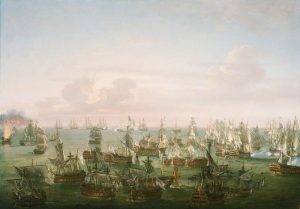
In 1803 the Peace of Amiens ended and England was once more at war with France. Codrington was back at sea, initially in a series of small frigates, and finally in 1805, in HMS Orion, a ship of the line. Codrington fought at the Battle of Trafalgar on 21 October. The Orion attacked the French ship, the Swiftsure, forcing her to surrender, made an unsuccessful attack on the Spanish flagship and then attacked the Intrepide along with several other English ships.
For the following few years, in command of HMS Blake, Codrington fought in the Mediterranean alongside the Spanish, commanding a squadron to harry the French along the coast. He was then called to take part in the disastrous Walcheren expedition in 1809, and it was at this point, researching This Blighted Expedition, that I first came across him. Codrington and his wife would have been only a few years older than my fictional navy couple, Hugh and Roseen Kelly, with children of a similar age, and a friendship seemed like a good plot device. In Codrington’s published memoirs is a vivid description of Jane’s terrifying ordeal during the shipwreck of HMS Venerable when she travelled to visit him in Walcheren, and in the novel, Roseen accompanies her.
After Walcheren, Codrington returned to Spain’s eastern seaboard. He was very involved when Tarragona was besieged by the French army, bringing in reinforcements, guiding cannon launches against the enemy and trying to assist the garrison. When the city fell, he performed a daring rescue operation on the beach, under fire from enemy guns and rescued more than 600 people, going to the trouble to personally reunite families who were separated during the evacuation. Codrington also showed a willingness to intervene in political matters when he spoke against the disarming of the local Catalan militia.
Codrington’s distinguished service was rewarded when he was promoted to Rear Admiral of the Blue in 1814, while serving off the coast of North America as Cochrane’s captain of the fleet. He was made a Knight Commander of the Order of the Bath in 1815, a rear admiral of the Red in 1819, and a vice admiral in 1821. He was elected a Fellow of the Royal Society in 1822.
Tragedy struck the family some time in 1821 or 1822 when Codrington’s son Edward, a midshipman aboard Cambrian was drowned in the Mediterranean. He was taking a cutter to Hydra when a squall overturned the boat, drowning Edward, a merchant, and three crewmen.
 In 1826, Codrington was appointed Commander-in-Chief of the Mediterranean Fleet and sailed for Greek waters in 1827, with orders to impose a peaceful solution on the chaos of the Greek War of Independence against the Ottoman Empire. Codrington was in command of a combined British, French and Russian fleet, and had been told to find a diplomatic solution. Diplomacy does not seem to have been Codrington’s strong point, and although he appears to have been under the mistaken impression that the Ottomans had broke an agreed truce, I suspect that the suffering of the local population would have been enough to set him off anyway. On 20 October 1827, in an action which very clearly exceeded his orders, Codrington destroyed the Turkish and Egyptian fleet at the Battle of Navarino.
In 1826, Codrington was appointed Commander-in-Chief of the Mediterranean Fleet and sailed for Greek waters in 1827, with orders to impose a peaceful solution on the chaos of the Greek War of Independence against the Ottoman Empire. Codrington was in command of a combined British, French and Russian fleet, and had been told to find a diplomatic solution. Diplomacy does not seem to have been Codrington’s strong point, and although he appears to have been under the mistaken impression that the Ottomans had broke an agreed truce, I suspect that the suffering of the local population would have been enough to set him off anyway. On 20 October 1827, in an action which very clearly exceeded his orders, Codrington destroyed the Turkish and Egyptian fleet at the Battle of Navarino.
After the battle Codrington went to Malta to refit his ships, then in May 1828, he sailed to join the French and Russian fleets on the coast of the Morea to attempt to force the capitulation of the governor, Ibrahim Pasha, who was employing brutal tactics to suppress rebellion in the area, desolating the countryside and sending thousands of the inhabitants into slavery in Egypt, intending to replace them with Muslim settlers from Africa.
On 22 June, Codrington received the news that he was to be recalled, probably to account for his actions. Before his successor could arrive, however, the three admirals agreed that Codrington should travel to Alexandria to persuade Mehemet Ali to recall Ibrahim Pasha. With typical disregard for the probable terms of his recall, Codrington went, and the evacuation of the Morea was settled in the treaty 6 August 1828. A French expeditionary force landed, and in October 1828 Ibrahim Pasha evacuated the country.
After his return home, Codrington mounted a spirited defence of his actions, and was fully exonerated and rewarded by the grant of the Grand Cross of the Bath, although there is no doubt that the British government was embarrassed by his intervention. It was considered that his action had further weakened the Ottoman Empire, which was seen as a bulwark against the ambitions of Russia.
Codrington spent the rest of his career close to home. He commanded a training squadron in the Channel in 1831 and became a full admiral in 1837. He was an MP between 1832 and 1839, when he became Commander-in-Chief, Portsmouth until 1842. His beloved Jane died in 1837.
Codrington died in London on 28 April 1851. He was survived by two sons, both of whom achieved distinction in the British armed forces. Sir William Codrington was a commander in the Crimean War and Sir Henry Codrington became an Admiral of the Fleet. His daughter Jane, married Sir Thomas Bourchier and was responsible for the publication of Codrington’s memoirs. There was another daughter, Elizabeth, but I’ve not yet been able to find out much about her, so I’m wondering if she died young.
 Codrington was buried in St Peter’s Church, Eaton Square, then in 1954, the remains were reburied at Brookwood Cemetery in Surrey. Plaques to his memory can be found in St Paul’s Cathedral and All Saints Church, Dodington, close to the family home and there is an obelisk dedicated to the memory of Codrington and his officers who fought at Navarino at Pylos, in Greece. Numerous roads are named after him in Greece, and stamps with his image have been issued.
Codrington was buried in St Peter’s Church, Eaton Square, then in 1954, the remains were reburied at Brookwood Cemetery in Surrey. Plaques to his memory can be found in St Paul’s Cathedral and All Saints Church, Dodington, close to the family home and there is an obelisk dedicated to the memory of Codrington and his officers who fought at Navarino at Pylos, in Greece. Numerous roads are named after him in Greece, and stamps with his image have been issued.
That was Sir Edward Codrington the hero. He was brave, intelligent and not afraid to put his own life and reputation on the line in order to do the right thing. He was well-liked and had many friends. He was a devoted husband, who adored his wife. He was compassionate, as demonstrated by his personal quest to reunite mothers and babies separated during the evacuation of Tarragona.
And he was a slave owner.
I’ve spent some time trying to find out more about this aspect of Codrington’s life. There is no doubt whatsoever that the Codringtons, the Bethell and the Hall families were plantation owners, slave owners and an integral part of the high-ranking families who made fortunes from the human misery of slavery in eighteenth century Britain. It’s much harder to establish the actual personal involvement of each individual member of every family to the institution of slavery. From my little outpost on the Isle of Man, especially in the middle of a pandemic, my research facilities are limited. Having said that, thanks to the fantastic website run by The Centre for the Study of the Legacies of British Slave-ownership at UCL, I’ve been able to find out a surprising amount about Sir Edward Codrington’s family, and I’m going to follow this up with another blog post, since that has been a whole different research rabbit hole.
Here’s what I know so far about Sir Edward Codrington and slavery. On 5th October 1835, under the terms of the Slavery Abolition Act of 1833, Codrington was awarded government compensation of £2588 6s 6d for the 190 slaves he had owned at the Rooms plantation on Antigua, and who had been freed under the terms of the act. The plantation was part of an inheritance shared by his siblings, from his uncle, Christopher Bethell in 1797.
Sir Edward’s memoirs and published letters are very quiet on the subject of slavery. Most of the references I could find, concerned his horrified indictment of the Ottoman practice of taking Greek prisoners into slavery in Egypt, but there is no hint in any of his letters that he drew any parallel with the slaves he owned in Antigua. This is probably not surprising, since most of these letters were of a professional and highly public nature and Codrington was fighting for his career after Navarino.
The only reference I could find to plantation slavery, is in a letter to his wife, dated February 1806. It seems that Codrington sent Jane an article from the Edinburgh Review which he hoped she would read.
“As I see no marks whatever, I fancy you did not look over the (article in the Edinburgh Review on) the Examen de l’Esclavage; which I lament, because that brutal publication has called forth from these gentlemen an investigation into the merits of the slave trade, and some reasoning on its merits and consequences, which I think well worthy the consideration of the planters. A new system must take place sooner or later in that part of the world; and I am fully convinced that it would be much better for it to originate with the most interested; and I think also, that they would find their advantage in anticipation, instead of waiting till the necessity of the case runs away with all the credit which might be due to the measure.”
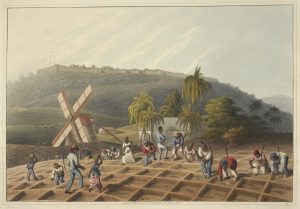 The book to which Codrington refers was “Examen de l’esclavage in général, et particulierement de l’esclavage des Nègres dans les colonies françaises de l’Amérique” which was published in 1802. I’ve not yet managed to read it, given that my French takes a while and a lot of patience, but as far as I am able to judge, it is written from an abolitionist standpoint. Britain was in the process of abolishing the slave trade, if not yet slavery itself, and it is interesting to see that Codrington was engaging with the debate in a way that suggests that he saw abolition as both desirable and inevitable. This was a very different standpoint to his brother, Christopher Bethell-Codrington, who in the same year rejected pressure from constituents to support the abolition of the slave trade, and continued to oppose abolition right to the bitter end.
The book to which Codrington refers was “Examen de l’esclavage in général, et particulierement de l’esclavage des Nègres dans les colonies françaises de l’Amérique” which was published in 1802. I’ve not yet managed to read it, given that my French takes a while and a lot of patience, but as far as I am able to judge, it is written from an abolitionist standpoint. Britain was in the process of abolishing the slave trade, if not yet slavery itself, and it is interesting to see that Codrington was engaging with the debate in a way that suggests that he saw abolition as both desirable and inevitable. This was a very different standpoint to his brother, Christopher Bethell-Codrington, who in the same year rejected pressure from constituents to support the abolition of the slave trade, and continued to oppose abolition right to the bitter end.
However, whatever doubts Edward Codrington may have entertained about slavery did not cause him to free the slaves he owned in Antigua. Slaves they remained until emancipation, and Codrington accepted government compensation along with the other slave owners of the British Isles. I find myself wondering if Codrington ever visited the West Indies. There is no mention of it in his published memoirs. Did he ever even see the men, woman and children he owned, or was he, like so many others, an absentee plantation owner, who took the revenue and gave no thought to the misery behind it?
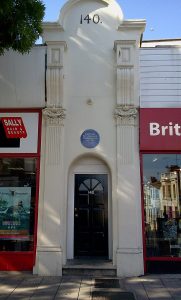 In 2009, the Greek Ambassador unveiled a blue plaque at the former home of Sir Edward Codrington in Brighton, and local newspapers spoke of Codrington as a hero. In 2020, the plaque was removed after local protests, in the wake of the Black Lives Matter protests following the death of George Floyd.
In 2009, the Greek Ambassador unveiled a blue plaque at the former home of Sir Edward Codrington in Brighton, and local newspapers spoke of Codrington as a hero. In 2020, the plaque was removed after local protests, in the wake of the Black Lives Matter protests following the death of George Floyd.
So who was Edward Codrington – compassionate war hero who risked his life and reputation for the citizens of Tarragona and the freedom of Greece or a man who made money from the misery of black African slaves? The truth is, of course, that he was both
My fictionalised Ned Codrington needs to encompass all aspects of his character as far as I can discover them. I’d no idea what I was taking on when I decided to include him in my novels, but he’s there now. I already have a sense of how he might be, and I’m looking forward to getting to understand him better.
There is undoubtedly more to know about Codrington, and one day I’d like to try to find out. Perhaps lurking in some archive that I don’t currently have access to, there is evidence that he did speak out openly against slavery during his lifetime. Or perhaps there is evidence that he was the opposite, a man actively involved either in the trade or the running of his plantation, greedy for profit and careless of the lives he ruined. Perhaps, and this would be my guess, Codrington didn’t spend much time thinking about it at all. Antigua was a long way away, and it must have been so easy for a man with a burgeoning career and a growing family to make use of that extra income and ignore where the money came from. I’ll let you know if I find out more. What I do know, is researching this blog post has given me an entire raft of new ideas for the future of the Manxman series.
I wonder what Codrington would have thought of the removal of that blue plaque, if he could somehow see it? I think he might have been surprised that it was there in the first place, Codrington didn’t strike me as a man chasing fame. But he was a man who valued his good name and I think he’d have been sad that a hundred and sixty-nine years after his death, his reputation seems to have been tarnished not by active cruelty but by indifference.
Sources
The Memoir of the Life of Edward Codrington vols 1 and 2, edited by Lady Jane Bourchier available online here.
The Centre for the Studies of the Legacies of British Slave Ownership at UCL available online here.
The History of Parliament Online, a work in progress, but available here.
Historic Hansard available here.
Don’t forget to watch out for the rest of the Historical Writers Forum October Blog Hop. Author Jen Wilson is up next with her take on Mary, Queen of Scots on Tuesday October 13th.
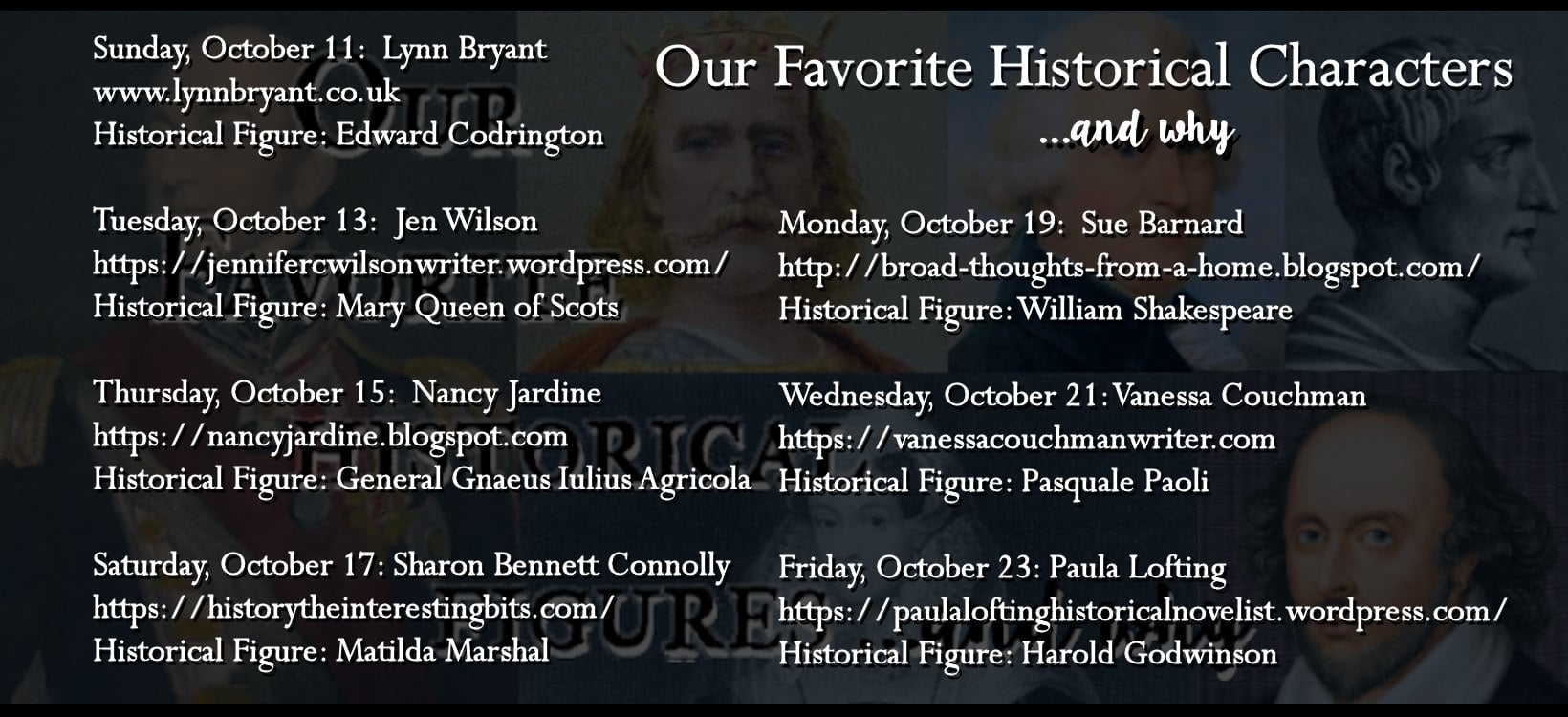
You can buy the first two books in the Manxman series on Kindle or in paperback over on Amazon.
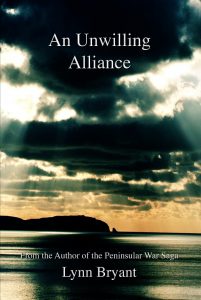 An Unwilling Alliance: the story of the Copenhagen campaign of 1807
An Unwilling Alliance: the story of the Copenhagen campaign of 1807
This Blighted Expedition: the story of the Walcheren campaign of 1809
Book three of the series, This Bloody Shore will be published in 2021.
If you have any comments or questions or just want to say hello, please feel free to join me on facebook, twitter or instagram, I always love to talk to readers.

